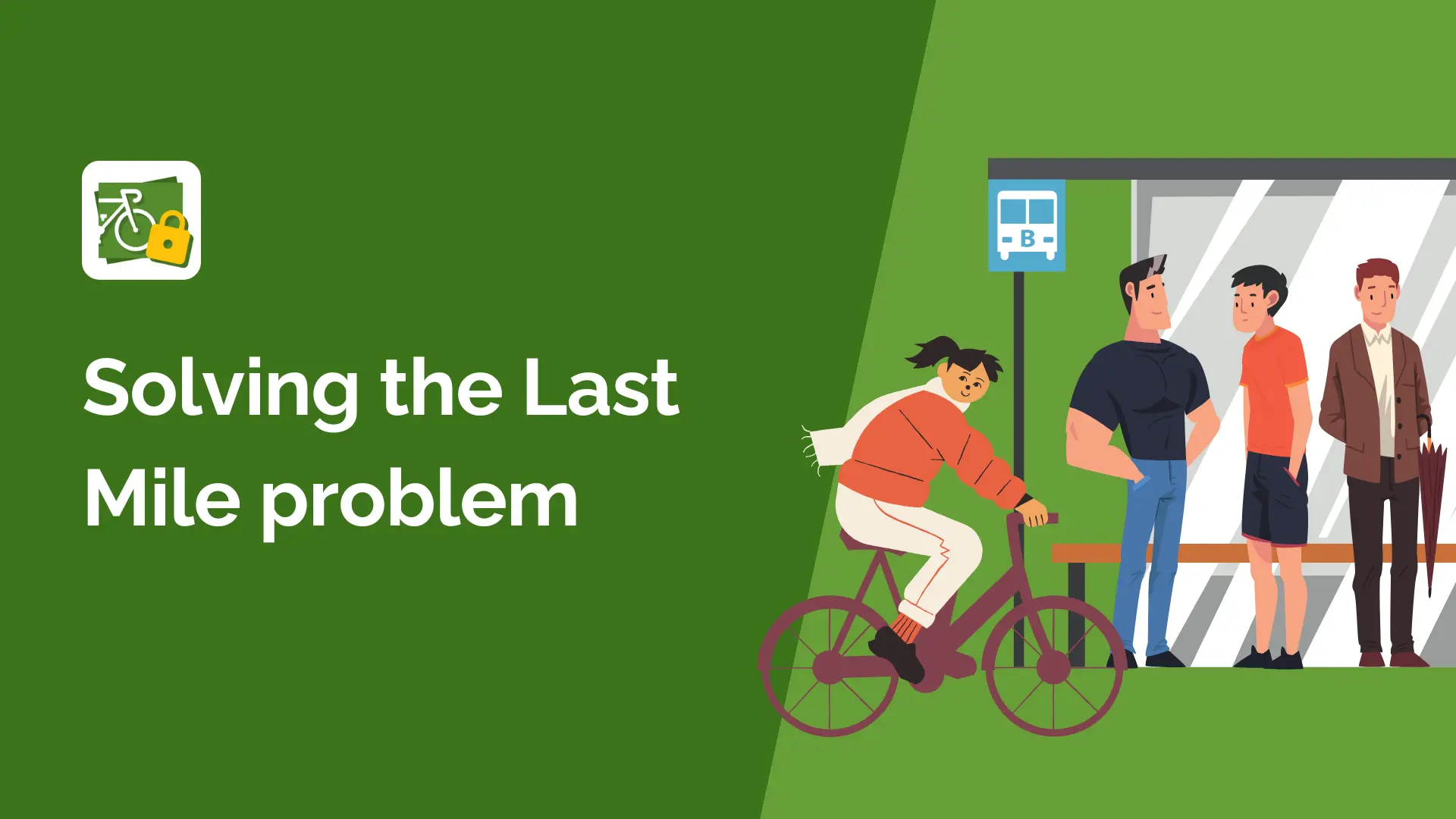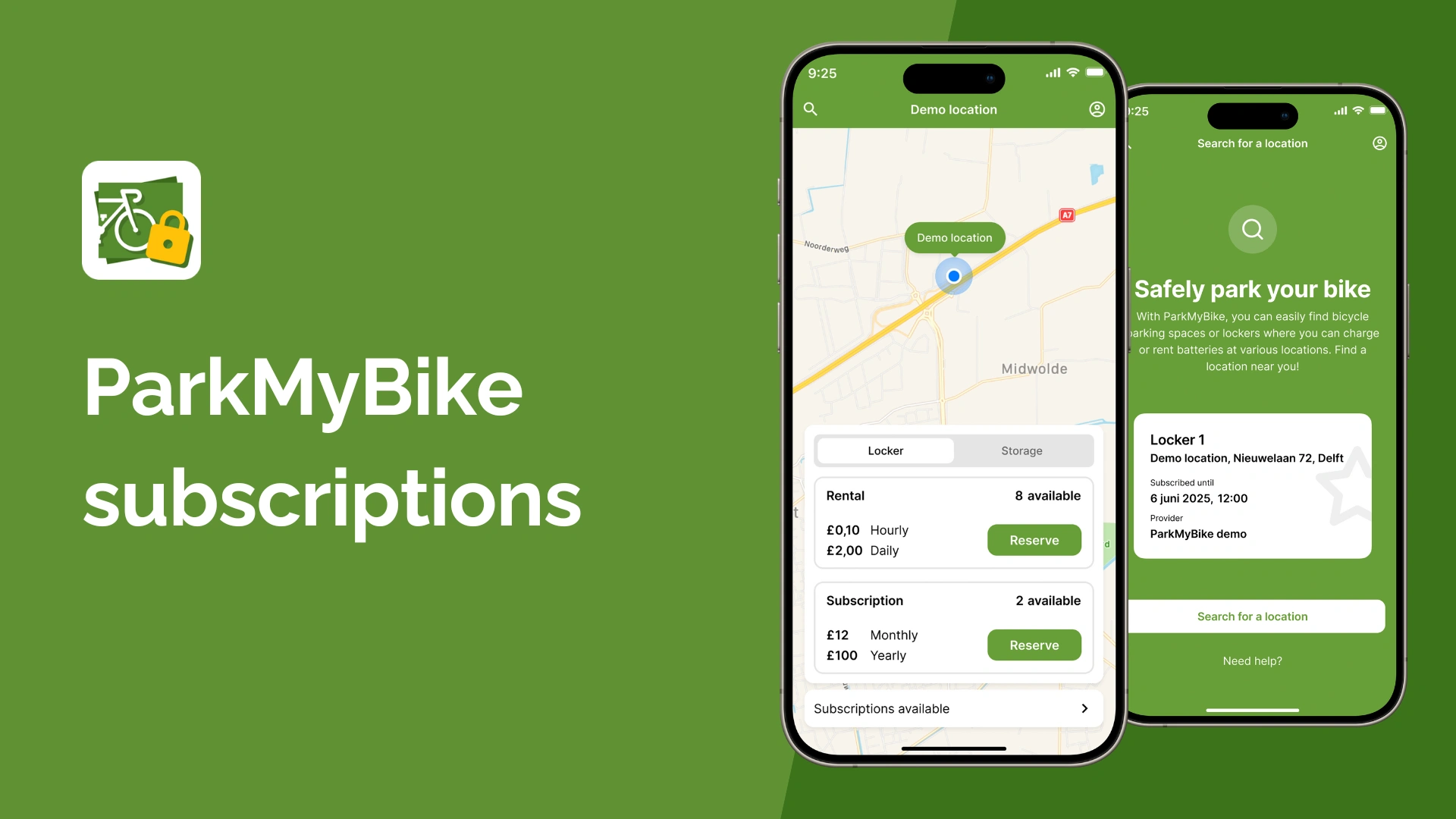Solving the Last Mile problem: The role of smart bike parking
By Julia Greijdanus on April 17, 2025

In cities across the globe, urban mobility is evolving, but one major challenge continues to hinder the efficiency and sustainability of transportation networks, the Last Mile problem. This term refers to the distance between a public transport hub (such as a train station or bus stop) and a commuter's final destination. While cities have made great strides in expanding public transport systems, the last mile remains a difficult gap to bridge. But what if the solution lies in a mode of transport that is as eco-friendly as it is effective, cycling?
Understanding the Last Mile problem
The Last Mile problem is one of the most significant hurdles in modern transportation systems, particularly in urban environments. It refers to the challenge of covering the final leg of a commuter’s journey, from the nearest public transit station (bus, train, subway) to their final destination, whether that's their home, office, or other points of interest. This final stretch often represents a significant barrier to the overall efficiency of public transport, as it can be too short to justify driving and too far for walking, leading many people to abandon public transport in favor of driving or, worse, using inefficient, individual transport options like taxis or rideshare services.
The cost of the Last Mile problem
The implications of the Last Mile problem are far-reaching. Firstly, it impacts congestion. When commuters opt to drive the last mile rather than using public transport or cycling, they contribute to the growing traffic problem, especially in urban centers where road space is limited. Secondly, it has environmental consequences. Cars and taxis are responsible for significant greenhouse gas emissions, so each additional car on the road adds to pollution and undermines sustainability goals.
Public transport systems can be efficient in covering longer distances, but without solutions for the last mile, their effectiveness is limited. To truly optimize public transport networks, cities need to address this gap and provide commuters with viable, sustainable alternatives for completing the final leg of their journey.
The role of cycling in solving the Last Mile problem
Cycling presents a promising solution to the Last Mile problem. It's fast, flexible, and significantly more sustainable than driving. In many cities, cycling is already one of the most efficient ways to navigate short distances. A bike can quickly take a commuter from a transit station to their destination, avoiding the delays and frustrations of car traffic, while also contributing to reduced carbon emissions.
But, for cycling to truly become a mainstream solution to the last mile problem, cities need to ensure that cyclists have access to safe, convenient, and secure parking options. Without these, potential cyclists may be deterred from using their bikes to complete their commutes, especially when the prospect of theft or vandalism looms large.
Smart bike lockers: The missing piece
This is where smart bike lockers come into play. Traditional bike racks or open-air parking are often inadequate, offering little protection against theft or the elements. A dedicated, secure space to park a bike, especially at transit stations, could make all the difference in encouraging commuters to use bicycles as their Last Mile solution. Smart bike lockers address this by providing secure, weatherproof, and user-friendly parking options that integrate modern technology, such as app-based access, making them a far more reliable and convenient choice for commuters.
Implementation: A few things to consider
While smart bike lockers offer significant potential, there are a few factors to keep in mind when planning their implementation:
- Initial investment: Installing smart bike lockers and supporting infrastructure like e-bike charging stations involves upfront costs. However, these should be seen as long-term investments that will reduce congestion, improve sustainability, and enhance the commuter experience.
- Space availability: In densely populated urban areas, space is limited. Creative solutions, such as repurposing underutilized areas at transit hubs or converting street parking spaces, can help maximize space without disrupting existing infrastructure.
- Raising awareness: To ensure high usage, cities must raise awareness about the availability and benefits of smart bike lockers. Effective marketing campaigns and integration with public transport apps can make it easy for commuters to find and use these facilities.
- Integration into broader mobility systems: Smart bike lockers should be part of an integrated mobility strategy, connecting cycling seamlessly with public transport. Cycling shouldn’t be viewed as a separate transport mode, but as part of an interconnected system alongside walking and transit.
Moving forward: The need for investment in cycling infrastructure
If cities are serious about reducing congestion, lowering emissions, and improving the overall efficiency of their transportation networks, investing in bike parking infrastructure is a crucial step. By combining secure, smart bike lockers with a robust public transport network, cities can unlock the full potential of cycling as a Last Mile solution.
At ParkMyBike, we’re committed to solving the last mile problem with secure, smart bike lockers. Our lockers offer real-time occupancy tracking, app-based access, and enhanced security, making cycling a convenient and reliable choice for commuters. Together, we can make cycling a key part of a sustainable transportation future.
